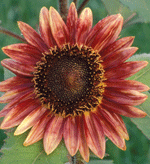Sunflowers Live Up to Their Namesake
go.ncsu.edu/readext?234381
en Español / em Português
El inglés es el idioma de control de esta página. En la medida en que haya algún conflicto entre la traducción al inglés y la traducción, el inglés prevalece.
Al hacer clic en el enlace de traducción se activa un servicio de traducción gratuito para convertir la página al español. Al igual que con cualquier traducción por Internet, la conversión no es sensible al contexto y puede que no traduzca el texto en su significado original. NC State Extension no garantiza la exactitud del texto traducido. Por favor, tenga en cuenta que algunas aplicaciones y/o servicios pueden no funcionar como se espera cuando se traducen.
Português
Inglês é o idioma de controle desta página. Na medida que haja algum conflito entre o texto original em Inglês e a tradução, o Inglês prevalece.
Ao clicar no link de tradução, um serviço gratuito de tradução será ativado para converter a página para o Português. Como em qualquer tradução pela internet, a conversão não é sensivel ao contexto e pode não ocorrer a tradução para o significado orginal. O serviço de Extensão da Carolina do Norte (NC State Extension) não garante a exatidão do texto traduzido. Por favor, observe que algumas funções ou serviços podem não funcionar como esperado após a tradução.
English
English is the controlling language of this page. To the extent there is any conflict between the English text and the translation, English controls.
Clicking on the translation link activates a free translation service to convert the page to Spanish. As with any Internet translation, the conversion is not context-sensitive and may not translate the text to its original meaning. NC State Extension does not guarantee the accuracy of the translated text. Please note that some applications and/or services may not function as expected when translated.
Collapse ▲
‘Velvet Queen’
Robert E. Lyons ©
Sunflowers are the quintessential flower of summer. Whether they are dotting the landscape with their golden orbs or adding a festive touch to a picnic bouquet, they can’t help but inspire smiles.
Sunflowers are in the genus Helianthus, a large group consisting of more than 150 species of annuals and perennials. The perennial species are easy to care for, needing full sun and protection from the wind. Most thrive in well-drained soils, but some species can be considered aggressive spreaders in the garden although we commonly overlook any inconvenience due to the beauty of the blooms whenever they appear.
One spectacular species to consider is H. maximiliani or Maximillian sunflower, a quick-growing perennial reaching about 10 feet tall and covered with numerous golden yellow flowers in late summer and fall. This sunflower is great when used for fresh cut flowers. The bloom ranges from 4 to 6 inches in diameter, and the long, thin leaves reach about 8 inches in length. H. angustifolius or swamp sunflower is another similar species found in North Carolina in moist soils and ditches. Helianthus x multiflorus is one of the most interesting Helianthus hybrids available. It is a clumping perennial, reaching 6 feet in height and spreading about 3 feet wide. The full flowers are domed and can reach 6 inches in diameter. The most common cultivars are ‘Capenoch Star,’ ‘Loddon Gold’ and ‘Soleil d’Or’.

‘Sunset’
Robert E. Lyons ©
Among the annuals to consider are ‘Autumn Beauty’ and ‘Teddy Bear’. Both are smaller than the common annual sunflower, which can reach 10 feet tall. Their smaller size makes them perfect for home gardeners.
To see the beauty and impact of sunflowers in a mixed border, visit the JC Raulston Arboretum. Eight different Helianthus species and hybrids reside in the mixed perennial border adjacent to the All-America Trial Garden.
Diane Ashburn Turner


